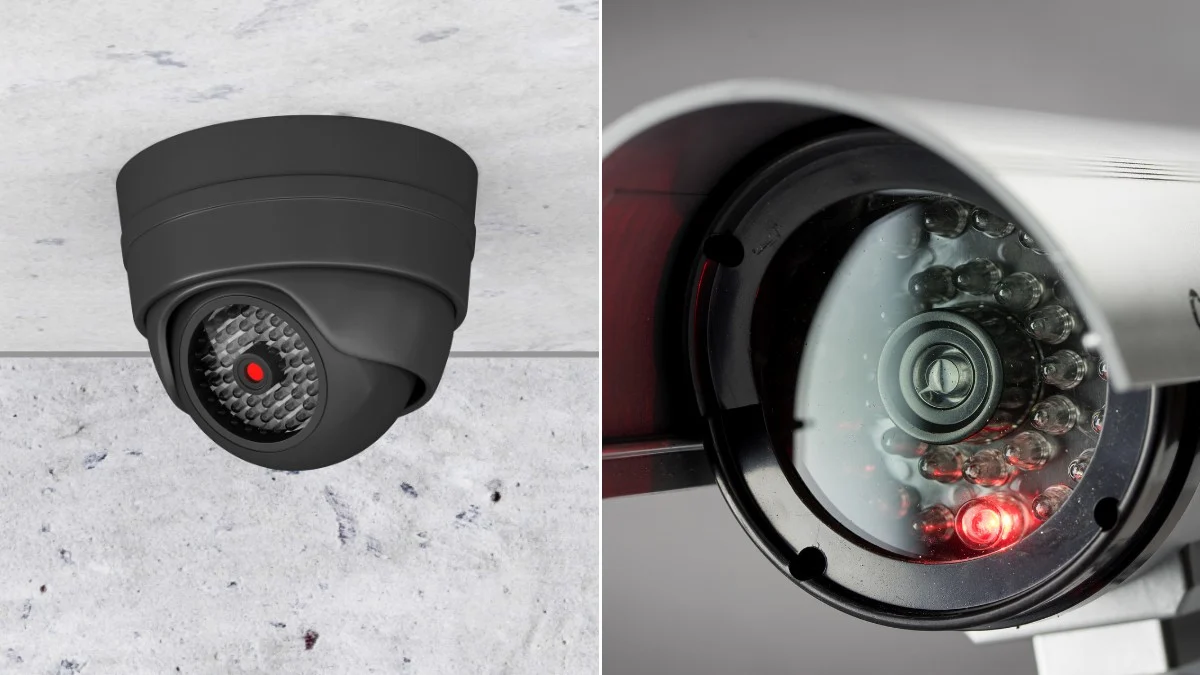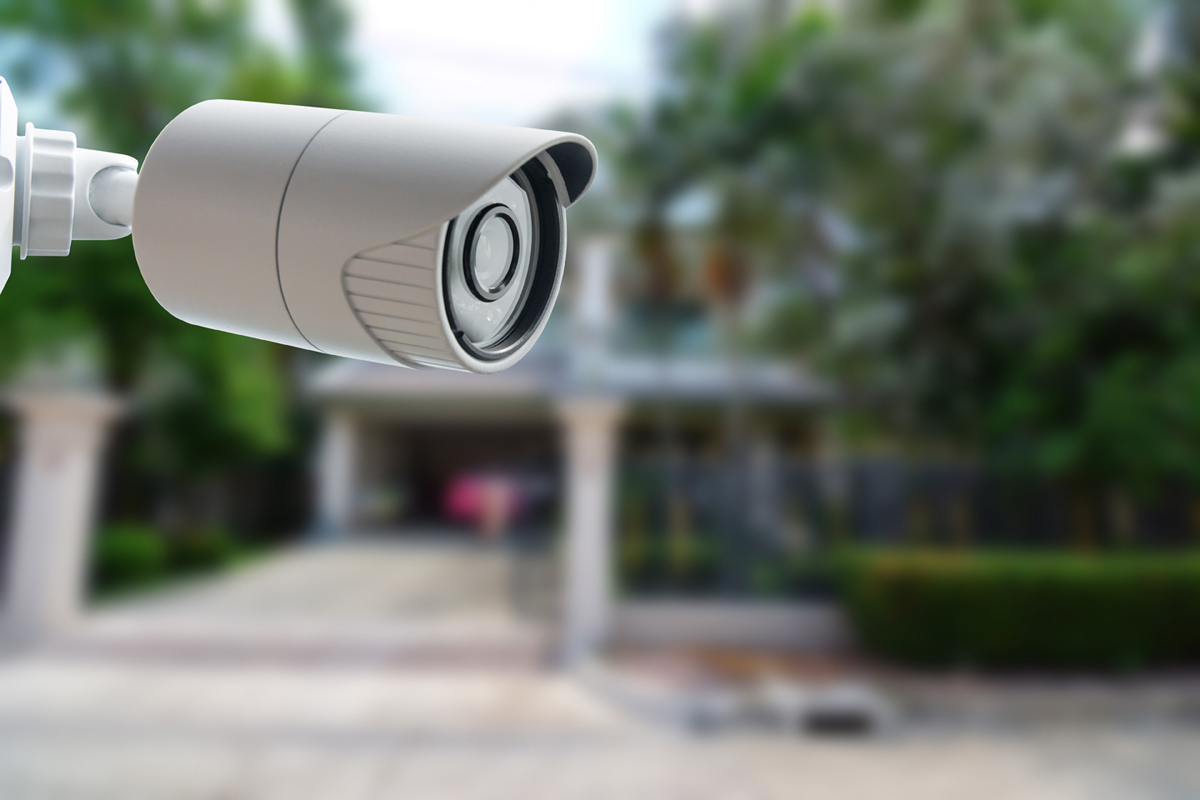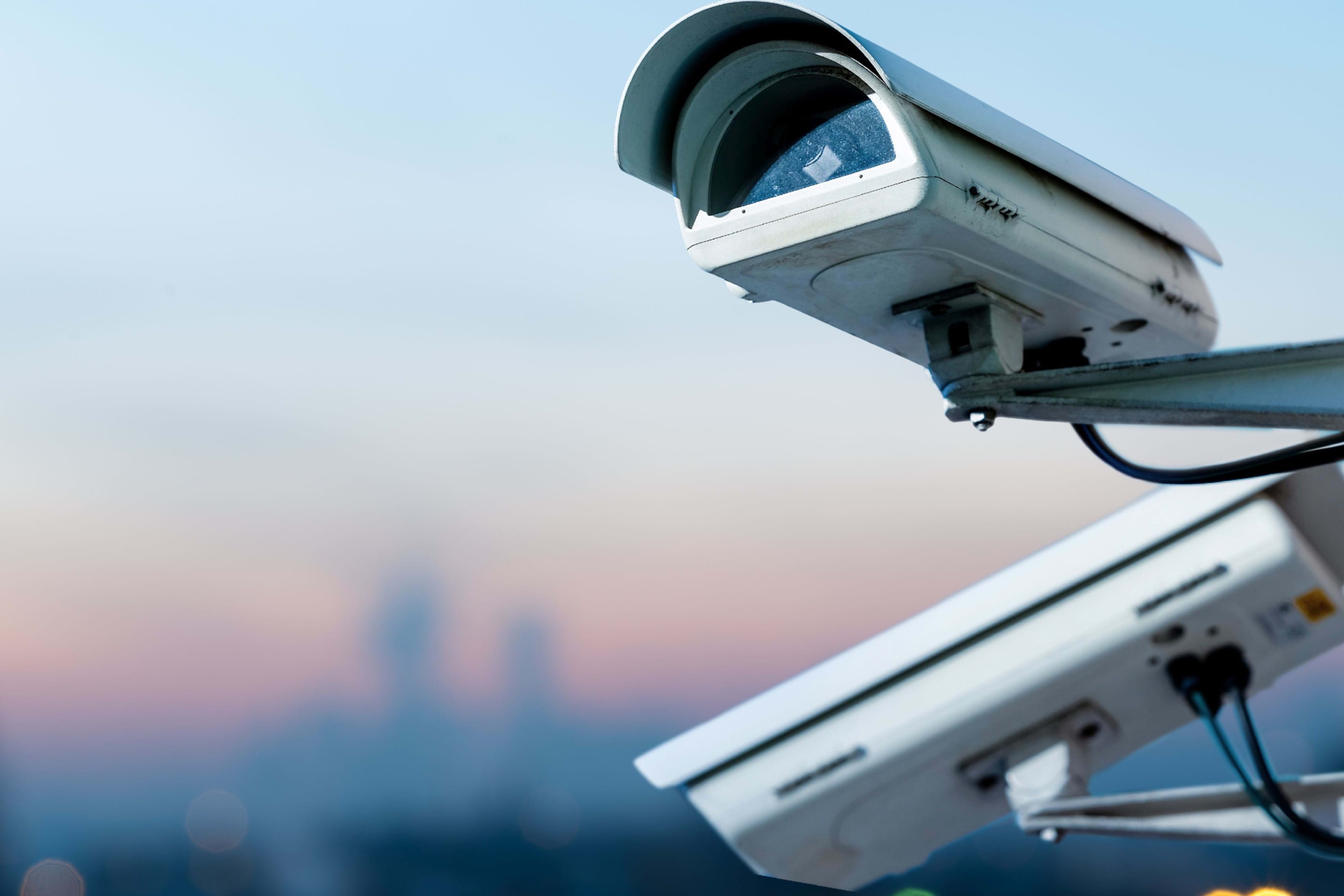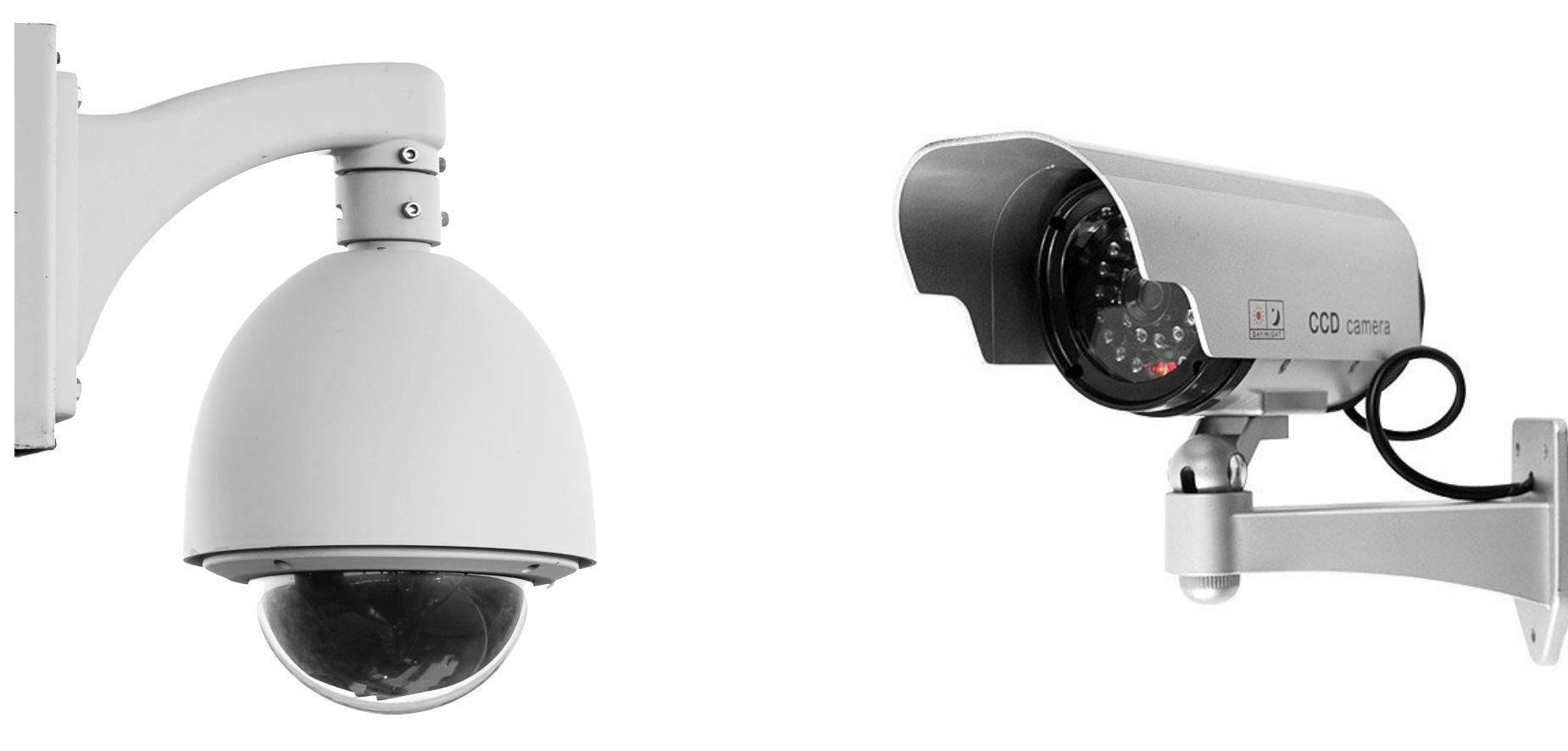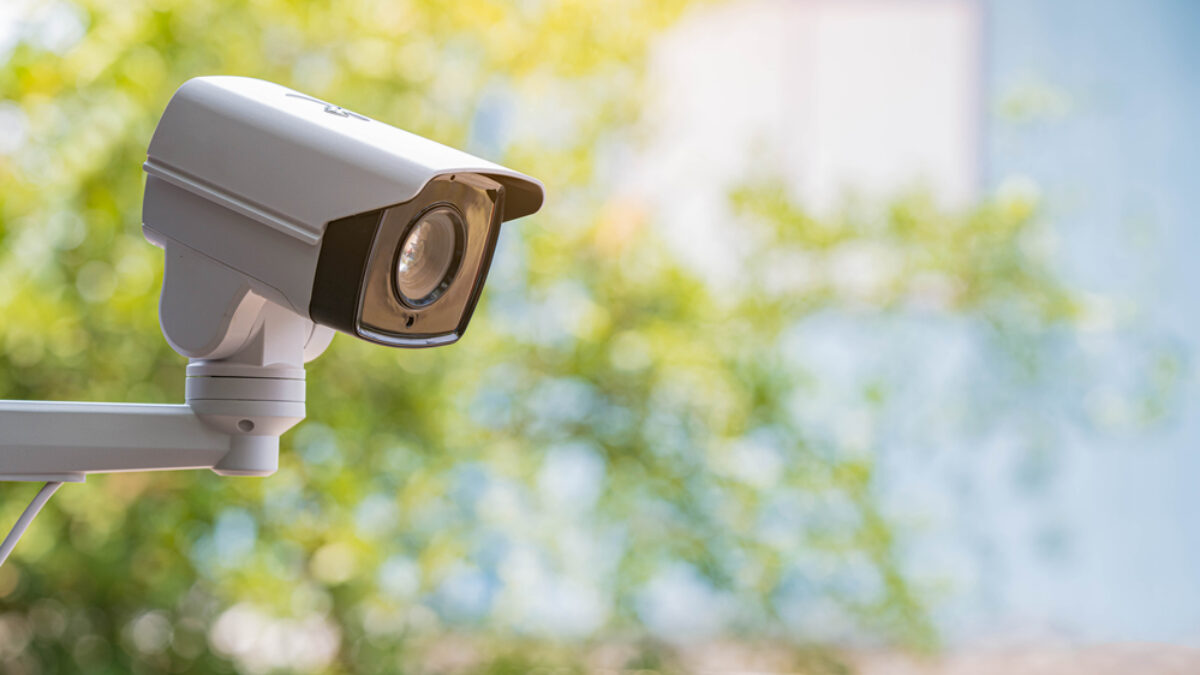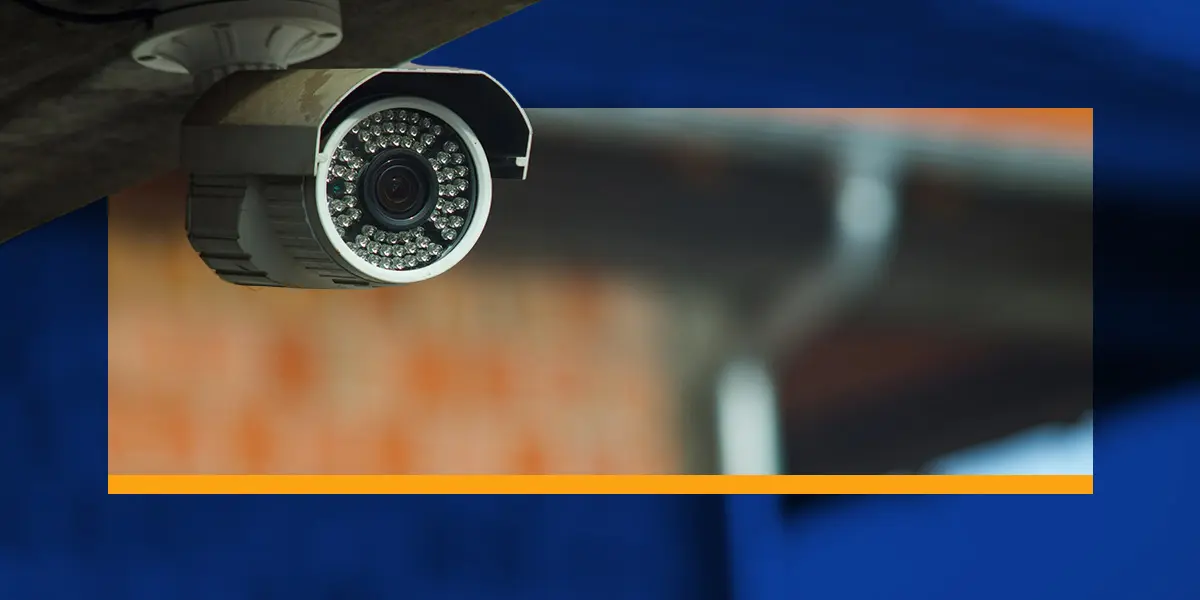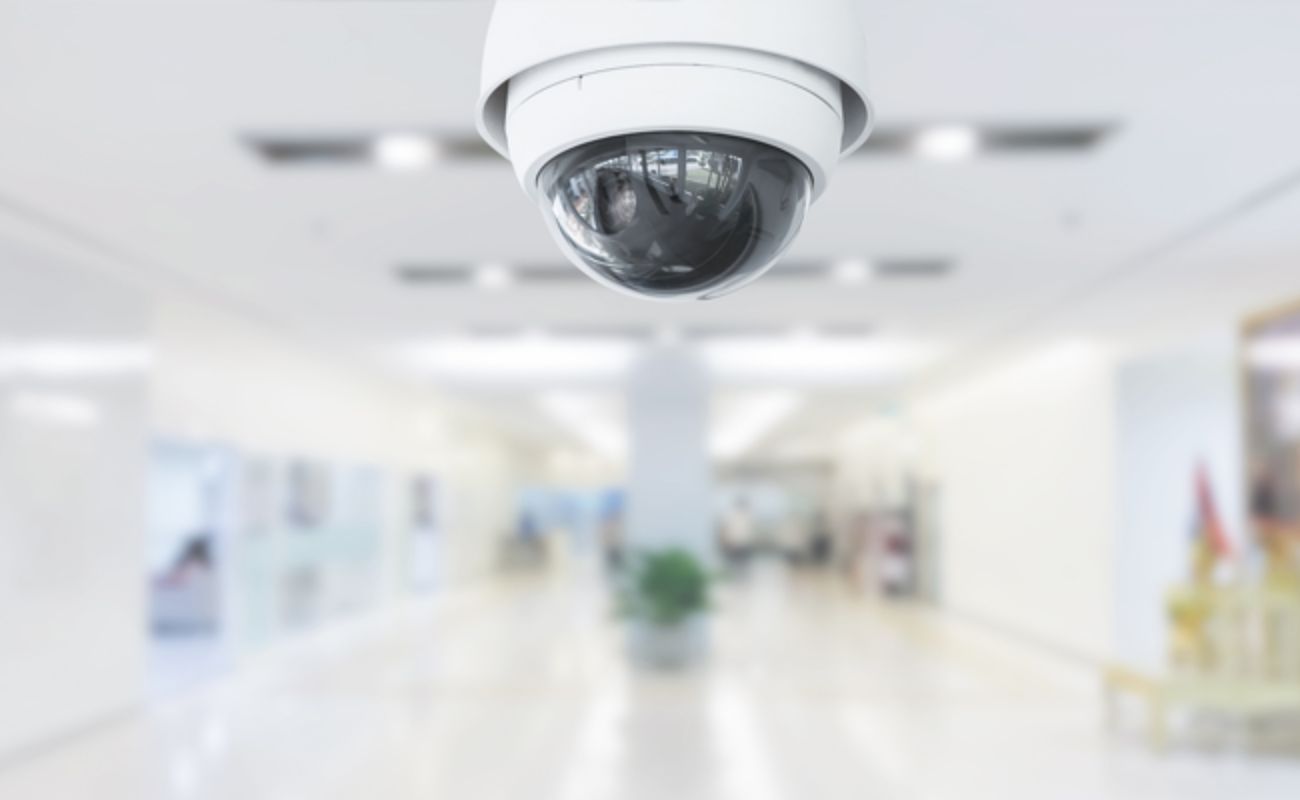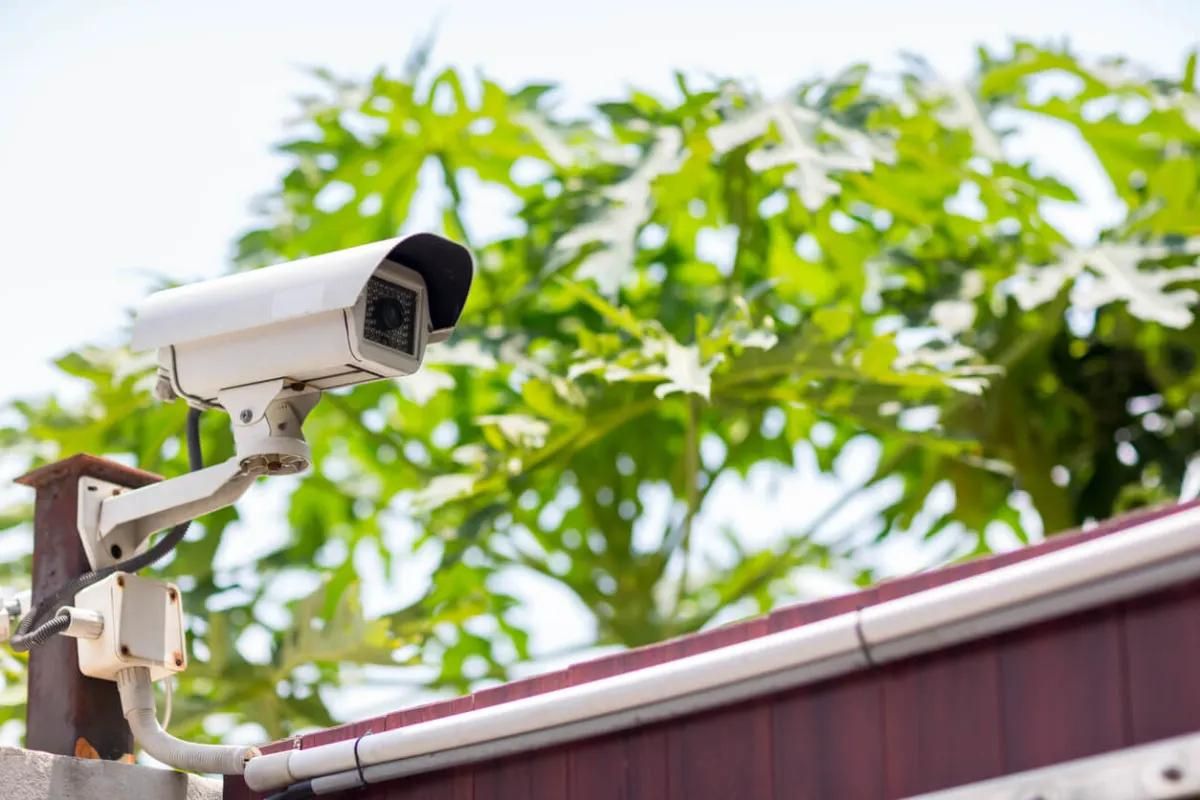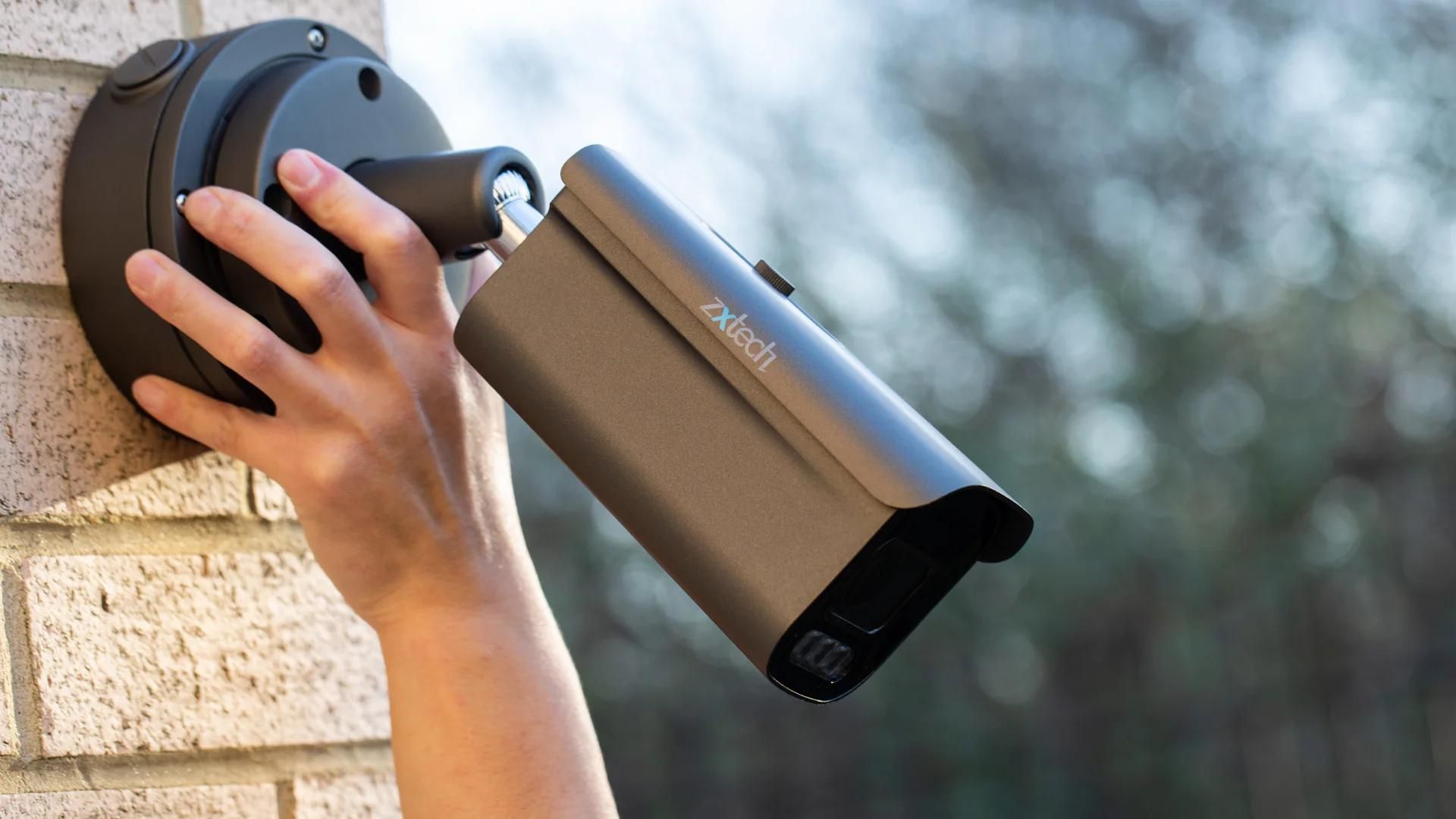Home>Home Security and Surveillance>What Does Poe Stand For In Security Cameras
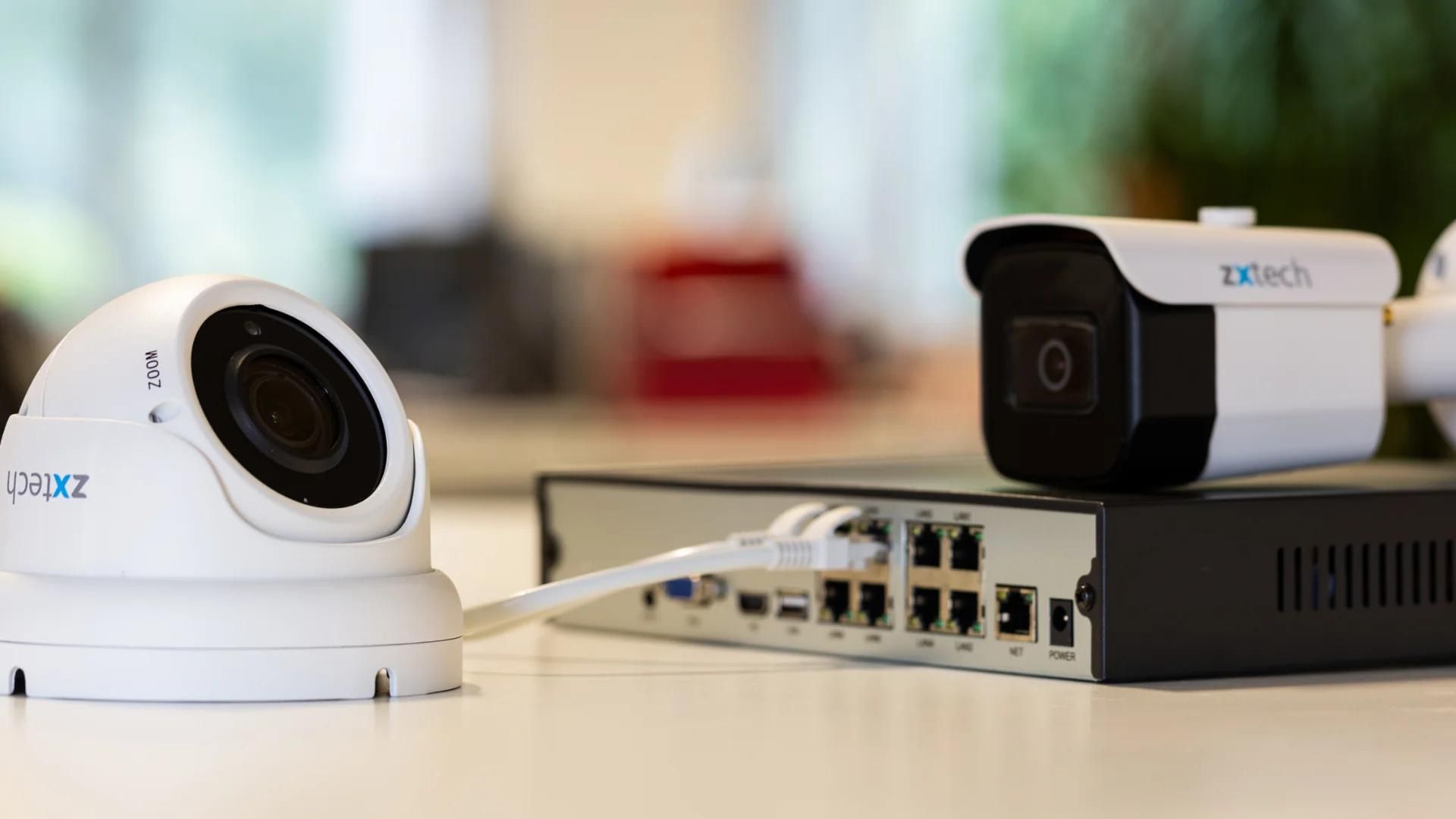

Home Security and Surveillance
What Does Poe Stand For In Security Cameras
Modified: March 6, 2024
Discover what Poe stands for in security cameras and how it enhances home security and surveillance. Learn about the benefits and features of Poe technology.
(Many of the links in this article redirect to a specific reviewed product. Your purchase of these products through affiliate links helps to generate commission for Storables.com, at no extra cost. Learn more)
Introduction
Welcome to the world of home security and surveillance, where peace of mind meets cutting-edge technology. With crime rates on the rise and the need for enhanced safety measures, it’s crucial to explore advanced security options. One such option is the use of PoE (Power over Ethernet) security cameras.
But what exactly does PoE stand for, and how can it benefit your home security system? In this article, we will dive into the world of PoE security cameras, exploring their features, advantages, and applications.
PoE, short for Power over Ethernet, is a technology that allows both power and data to be transmitted over a single Ethernet cable. This eliminates the need for separate power cables, making installation easier and more flexible.
The benefits of PoE security cameras go beyond just convenience. They offer a range of features and advantages that can greatly enhance your home security system. Let’s take a closer look at some of them.
Key Takeaways:
- PoE security cameras simplify installation and reduce clutter by transmitting power and data over a single Ethernet cable. This makes them convenient and cost-effective for home surveillance systems.
- PoE security cameras offer flexibility, scalability, and advanced features that enhance overall security. They are versatile and suitable for various settings, providing peace of mind and protection.
Read more: What Is A PoE Security Camera
Definition of PoE
PoE, or Power over Ethernet, is a technology that allows electrical power to be transmitted over Ethernet cables, which are commonly used for network connections. In traditional setups, devices such as security cameras would require both a power source and a network connection, necessitating the use of separate cables. However, with PoE, power and data can be delivered through a single Ethernet cable, simplifying the installation process and making it more streamlined.
PoE operates on a standard called IEEE 802.3af, which specifies how power should be delivered over Ethernet cables. The standard allows for power delivery of up to 15.4 watts per port. In addition, there is a newer standard called IEEE 802.3at, also known as PoE+, which allows for power delivery of up to 30 watts per port. This increased power capacity is particularly useful for devices that require more power, such as pan-tilt-zoom (PTZ) cameras or devices with built-in heaters or blowers.
One of the key components of a PoE system is the PoE switch. This switch is responsible for sourcing power from the network and delivering it to the connected PoE devices. The switch can detect if a connected device is PoE-compatible and provide the appropriate power accordingly. This compatibility allows for seamless integration with existing network infrastructure.
It’s important to note that not all devices are PoE-compatible out of the box. Some devices may require additional PoE injectors or splitters to convert the power from a standard power outlet into a form that can be transmitted over the Ethernet cable.
Overall, PoE is a convenient and efficient solution for powering and connecting devices, especially in scenarios where running separate power cables would be impractical or costly. Its simplicity and versatility make it a popular choice in home security and surveillance systems.
Benefits of PoE Security Cameras
PoE security cameras offer numerous advantages that make them a preferred choice for home surveillance systems. Here are some key benefits:
- Simplified Installation: With PoE cameras, there is no need to run separate power cables alongside Ethernet cables. This significantly simplifies the installation process, reduces clutter, and saves time and effort.
- Flexibility and Scalability: PoE cameras can be easily placed and relocated wherever there is an Ethernet connection, without the restriction of power outlets. This flexibility allows for seamless repositioning or expansion of the surveillance system as needed.
- Cost-Effective: By eliminating the need for additional power cables and outlets, PoE cameras can help lower installation costs. Additionally, utilizing a single cable for power and data transmission reduces cable costs and infrastructure requirements.
- Reliable Power Supply: PoE technology ensures a steady and reliable power supply to the cameras, even in the event of power outages. PoE switches often have power backup capabilities, such as uninterruptible power supply (UPS) support, ensuring continuous operation of the surveillance system.
- Centralized Management: PoE cameras can be easily integrated into a centralized management system, allowing for centralized control, monitoring, and configuration of multiple cameras. This simplifies maintenance tasks, such as firmware updates and camera settings adjustments.
- Enhanced Security: PoE cameras often support advanced features such as remote access, motion detection, and integration with other security devices. These features enable real-time monitoring and prompt notifications, enhancing overall security levels.
- Efficient Power Management: PoE switches can provide power management features, allowing users to schedule the shutdown or power cycling of cameras during specific times, reducing energy consumption. This is beneficial both for cost savings and environmental sustainability.
By utilizing PoE technology, home security systems can leverage these benefits to create a comprehensive and efficient surveillance solution. Whether you are monitoring your property or ensuring the safety of your loved ones, PoE security cameras offer a reliable and convenient approach to home security.
How PoE Works in Security Cameras
PoE (Power over Ethernet) works by combining power and data transmission over a single Ethernet cable. This eliminates the need for separate power cables for security cameras, streamlining the installation process and reducing clutter.
At the heart of a PoE system is the PoE switch, which acts as the power source for the connected devices. The switch detects if a connected device is PoE-compatible and delivers power accordingly. It uses a technique known as Power Sourcing Equipment (PSE) to provide power to the devices.
When a PoE camera is connected to a PoE switch, the camera and the switch negotiate the power requirements. The camera informs the switch about its power consumption needs, and the switch adjusts the power delivery accordingly. This ensures that the camera receives the appropriate amount of power without overloading or underpowering the device.
PoE switches typically deliver power at either 15.4 watts per port (IEEE 802.3af) or 30 watts per port (IEEE 802.3at). The power delivery depends on the capabilities of the switch and the power requirements of the connected cameras.
PoE cameras are designed to accept power from the Ethernet cable through a specialized PoE port. These cameras have built-in PoE interfaces that simplify the installation process. Once the power is received, the camera utilizes it to operate its various components, such as the lens, image sensor, and infrared illuminators.
It’s important to note that PoE cameras are typically designed to be low power devices, as the power delivered through the PoE switch is limited. However, advancements in technology have allowed for the development of higher power PoE standards such as PoE+ (IEEE 802.3at). These higher power standards enable the use of more power-hungry devices such as PTZ cameras or devices with additional features like heaters or blowers.
In summary, PoE works by using a PoE switch to supply both power and data over a single Ethernet cable to the security cameras. This integration simplifies the installation process, reduces costs, and provides a reliable power source for the cameras, making PoE an ideal choice for home security systems.
PoE vs. Traditional Security Camera Systems
When it comes to choosing the right security camera system for your home, you may encounter a choice between PoE (Power over Ethernet) and traditional systems. Understanding the differences between the two can help you make an informed decision. Here’s a comparison of PoE and traditional security camera systems:
Read also: 11 Amazing Poe Security Cameras For 2024
Power Source:
In a traditional security camera system, each camera requires its own power source, typically through a nearby power outlet. This means running separate power cables alongside the Ethernet cables. In contrast, PoE cameras receive power through the Ethernet cable itself, eliminating the need for separate power cables. The power is provided by a PoE switch, simplifying the installation process and reducing cable clutter.
Installation:
Traditional security camera systems can be more time-consuming and complex to install due to the need for separate power cables. In contrast, PoE cameras are easier to install as they only require a single Ethernet cable for both power and data transmission. This streamlined installation process can save time and effort, especially in situations where running separate power cables is challenging or impractical.
Flexibility:
Traditional security camera systems are limited by the availability of power outlets. Cameras may need to be positioned near power sources, which can be restrictive. PoE cameras, on the other hand, offer greater flexibility in camera placement. With power delivered through the Ethernet cable, they can be installed at any location with an Ethernet connection, providing more options for optimal camera positioning.
Scalability:
Expanding a traditional security camera system can be more complicated and costly. Each additional camera requires its own power source and cable infrastructure. PoE systems, on the other hand, are more scalable. With a PoE switch and Ethernet cables in place, adding new cameras becomes a simpler and less expensive process. This scalability allows for easy expansion of your surveillance system as your needs evolve.
Read more: What Does Nvr Mean On Security Cameras
Cost-Effectiveness:
In terms of cost, PoE systems can provide savings in several aspects. The elimination of separate power cables reduces the total cable length required, resulting in cost savings. PoE systems also allow for greater flexibility and scalability, reducing the need for additional power infrastructure. Additionally, PoE switches can be used to power multiple devices, such as access points or VoIP phones, further optimizing cost-efficiency.
Reliability:
Traditional security camera systems are vulnerable to power outages unless they are equipped with backup power sources such as batteries or generators. PoE systems, on the other hand, can benefit from the power backup capabilities inherent in many PoE switches. This ensures that the cameras remain operational even during power disruptions, providing uninterrupted surveillance.
Ultimately, the choice between PoE and traditional security camera systems depends on your specific needs and requirements. While traditional systems may still have their place in certain scenarios, PoE systems offer greater convenience, flexibility, and cost-effectiveness, making them an increasingly popular choice for modern home security systems.
Factors to Consider when Using PoE Security Cameras
When incorporating PoE (Power over Ethernet) security cameras into your home security system, there are several important factors to consider. These factors will help ensure optimal performance, reliability, and seamless integration. Let’s explore these factors:
Power Budget:
Before installing PoE cameras, it’s crucial to consider the power budget of your PoE switch or injector. Each PoE device consumes a certain amount of power, and the total power requirement of all connected devices should not exceed the power capacity of the switch. It’s recommended to check the specifications of the PoE switch and calculate the power consumption of the cameras to ensure compatibility.
Read more: What Does HDD Mean On Security Cameras
PoE Standards:
When selecting PoE security cameras, it’s essential to consider the PoE standards supported by your equipment. The most common standards are IEEE 802.3af (PoE) and IEEE 802.3at (PoE+). PoE+ provides higher power delivery capabilities, which can be beneficial for devices that require more power, such as PTZ cameras or cameras with additional features like heaters or blowers. Ensure that the cameras and the PoE switch are compatible in terms of the PoE standard supported.
Cable Length and Quality:
The length and quality of the Ethernet cables used to connect PoE cameras can impact performance. It’s important to consider the maximum cable length supported by the PoE standard being used. Longer cable runs may require thicker gauge cables to minimize power loss over the distance. High-quality Ethernet cables with proper shielding can also help reduce interference and ensure optimal data transmission.
Network Bandwidth:
PoE cameras transmit both power and data over the Ethernet cable. It’s important to consider the impact of the cameras on the network bandwidth. High-resolution cameras or cameras with advanced features can generate significant network traffic. Ensure that your network infrastructure can handle the additional bandwidth requirements to avoid congestion and performance issues.
Network Switch Capacity:
When connecting multiple PoE cameras to a network switch, consider the switch’s capacity to handle the data and power requirements. Each PoE camera consumes both power and network resources. Therefore, it’s important to ensure that the switch has sufficient ports and power budget to support all the connected devices without overloading the system.
Read more: What Is A Poe Adapter
Environmental Considerations:
PoE cameras may be installed in various environments, including outdoor locations. It’s crucial to choose cameras that are specifically designed and rated for outdoor use, ensuring they can withstand weather conditions such as rain, heat, and cold. Additionally, consider factors such as temperature range, ingress protection (IP) rating, and resistance to dust and vandalism if necessary.
By carefully considering these factors, you can ensure the successful deployment and operation of your PoE security cameras. Evaluating power requirements, adhering to PoE standards, using appropriate cables, managing network bandwidth and switch capacity, and accounting for environmental considerations will help maximize the performance and reliability of your PoE security camera system.
Common PoE Security Camera Applications
PoE (Power over Ethernet) security cameras have gained popularity due to their ease of installation, flexibility, and cost-effectiveness. They find application in various scenarios, providing surveillance and peace of mind. Here are some common applications of PoE security cameras:
Residential Security:
PoE security cameras are commonly used in residential settings to monitor homes and properties. They provide homeowners with the ability to remotely monitor their surroundings, detect suspicious activities, and deter intruders. The easy installation and flexibility of PoE cameras make them ideal for securing residential premises.
Small Businesses:
Small businesses can benefit from PoE security cameras to protect their physical assets and ensure the safety of their employees and customers. PoE cameras can be easily installed in shops, offices, or warehouses, providing real-time monitoring and evidence in case of incidents. The centralized management capabilities of PoE systems allow for easy monitoring of multiple locations.
Read more: What Does A Laser Do To A Security Camera
Retail Stores:
Retail stores often utilize PoE cameras to prevent theft, monitor customer behavior, and enhance overall security. By strategically positioning PoE cameras in stores, owners can identify suspicious activities, track inventory, and ensure a safe shopping environment. The scalability of PoE systems allows for easy expansion to cover larger retail spaces.
Outdoor Surveillance:
PoE security cameras are designed to withstand outdoor conditions, making them suitable for outdoor surveillance applications. From monitoring parking lots and entrances to securing perimeter areas, PoE cameras offer the flexibility and reliability required for outdoor surveillance. With their ability to transmit power and data over a single Ethernet cable, installing cameras in outdoor locations becomes more convenient.
Schools and Educational Institutions:
PoE security cameras play a crucial role in ensuring the safety of students, staff, and assets in educational institutions. They can be used to monitor entrances, hallways, parking lots, and other areas to prevent unauthorized access, monitor student behavior, and provide evidence in case of incidents. The power and data transmission simplicity of PoE systems make them a feasible solution for schools and educational environments.
Hospitals and Healthcare Facilities:
PoE security cameras find application in hospitals and healthcare facilities to protect patients, staff, and valuable equipment. They can be used to monitor entrances, emergency exits, critical care units, and parking areas. PoE cameras can also assist in maintaining compliance with regulations related to patient safety and security.
These are just a few examples of the various applications where PoE security cameras can be deployed. Their versatility, ease of installation, and cost-effectiveness make them an attractive choice for home security systems, small businesses, retail stores, outdoor surveillance, educational institutions, healthcare facilities, and many other scenarios where reliable and efficient surveillance is essential.
Read more: How To Wire A PoE Outdoor Camera
Conclusion
PoE (Power over Ethernet) security cameras offer a range of benefits that make them an excellent choice for home security and surveillance systems. With the ability to transmit power and data over a single Ethernet cable, PoE cameras simplify installation, reduce clutter, and provide reliable power to the devices. They offer flexibility, scalability, and cost-effectiveness that traditional security camera systems often cannot match.
By eliminating the need for separate power cables, PoE cameras save time and effort during installation, making them a convenient choice for homeowners and businesses alike. Their flexibility allows for optimal camera placement without the limitations of power outlets, while their scalability enables easy expansion of the surveillance system as needs evolve.
In addition to the practical advantages, PoE security cameras enhance overall security by offering centralized management, remote access, and integration with other security devices. They provide advanced features such as motion detection and real-time monitoring, enabling prompt notifications and proactive responses to potential threats.
When considering PoE security cameras, it is important to take into account factors such as power budget, PoE standards, cable length and quality, network bandwidth, network switch capacity, and environmental considerations. These factors ensure optimal performance, reliability, and seamless integration of the cameras into the surveillance system.
PoE security cameras have found applications in various settings, including residential, small businesses, retail, outdoor surveillance, schools, and healthcare facilities. Their versatility and adaptability make them suitable for diverse surveillance needs, providing peace of mind and protection for individuals, properties, and assets.
In conclusion, PoE security cameras revolutionize the way we approach home security and surveillance. With their simplicity, convenience, and functionality, they offer an efficient and effective solution for surveillance needs. By leveraging the benefits of PoE technology, you can enhance your security system and enjoy the peace of mind that comes with knowing your loved ones and belongings are well-protected.
Frequently Asked Questions about What Does Poe Stand For In Security Cameras
Was this page helpful?
At Storables.com, we guarantee accurate and reliable information. Our content, validated by Expert Board Contributors, is crafted following stringent Editorial Policies. We're committed to providing you with well-researched, expert-backed insights for all your informational needs.
